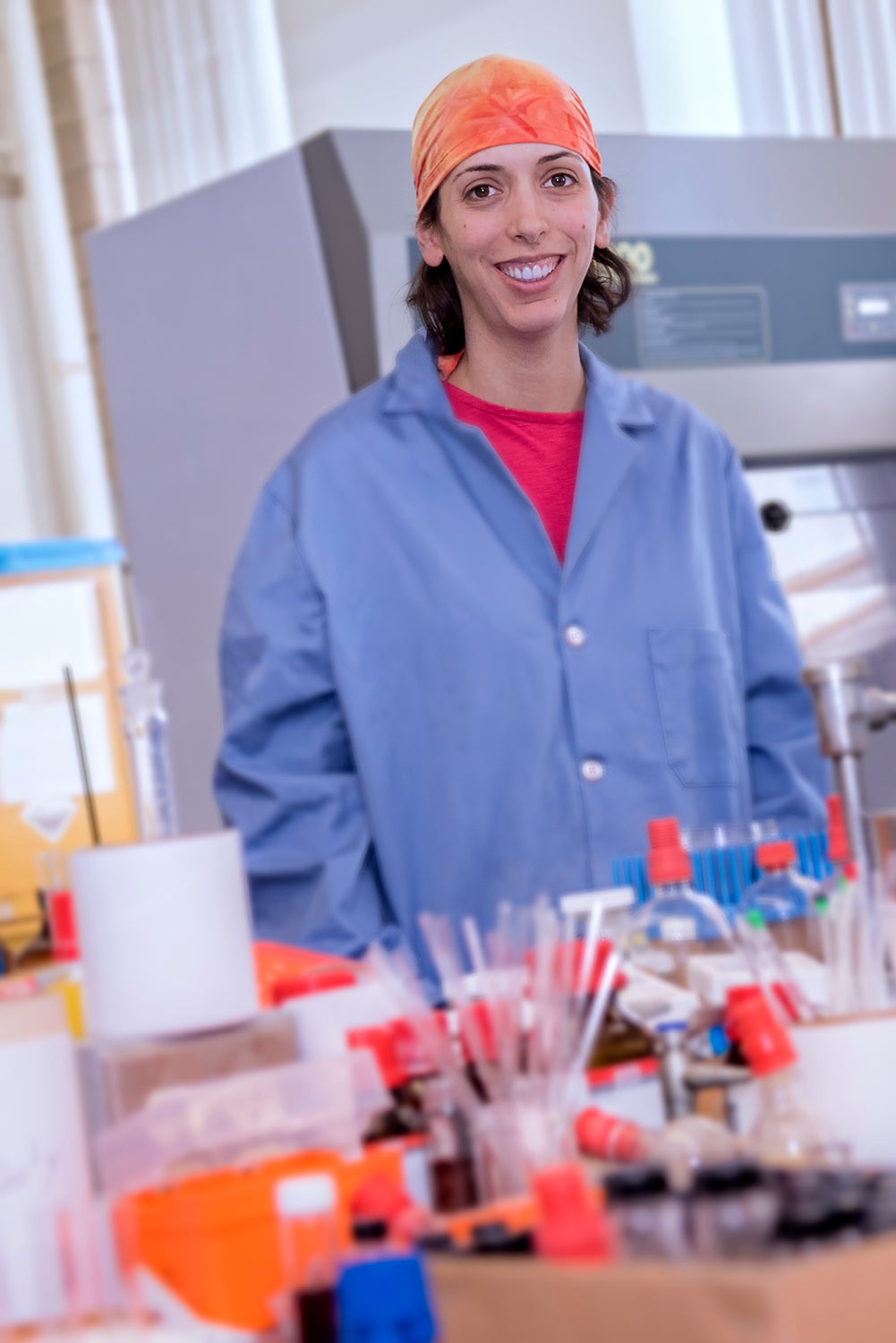KINGSTON, R.I. — Aug. 8, 2018 – Mindy Levine, associate professor of chemistry at the University of Rhode Island, is the first recipient of the Sessler Early Career Researcher Prize, awarded in July by the editors of the journal Supramolecular Chemistry for a research paper published in the journal in 2016.
“The panel was unanimous in its belief that Mindy’s paper described excellent, cutting edge research of considerable interest to the supramolecular community,” said Bruce Gibbs, U.S. editor-in-chief of Supramolecular Chemistry.
Levine, of Sharon, Mass., was honored for her paper, “Sensitive and selective detection of alcohols via fluorescence modulation,” written with graduate student Dana J. DiScenza, of Pomona, N.Y.
“The award is a reflection of the fact that the supramolecular chemistry community has been outstandingly supportive of younger scientists,” Levine said. “To the extent that it’s named for Jonathan Sessler, he in particular has been a model for that in the community at large and for me personally. I think it’s a real privilege.”
As part of the prize, Levine presented her research at the July conference of the annual International Symposium on Macrocyclic and Supramolecular Chemistry in Quebec City, Quebec, Canada. Levine, in her eighth year at URI, has also been named to the journal’s editorial board.
The paper focused on detecting alcohols, many of which are known or suspected toxicants, and could benefit the fields of public health and the environment. Using a compound of a ring of repeating sugar molecules, cyclodextrin, alcohol molecules were held in close proximity to a fluorescent dye in or near the cyclodextrin cavity, leading to interactions between the alcohol and dye, said DiScenza, lead author on the paper. The interaction ultimately induced an alcohol-specific change in the fluorescent signal of the dye.
The use of fluorescence, which makes the detection easier in a complex environment such as a river contaminated by a chemical spill, is a new detection approach, Levine said.
The end goal, said Levine, would be the development of a versatile sensor that would identify classes of toxicants present in a complex environment to aid first responders to an environmental accident. Currently, first responders need precise information on the toxicant involved before devising a response plan.
“We’re bad as a scientific community of doing unguided detection, so if you don’t know what you’re looking for or if you have mistaken information we’re terrible at it,” Levine said. “We’re trying to solve this problem by developing methods that are sort of counterintuitive in the detection science community. We want things that are less sensitive for any particular analytic compound and more sensitive for classes of compounds.”
Levine got the idea for her research as she does for many others – from everyday life. Determining if the milk in the fridge is spoiled, or if your microwave lunch is OK to eat after its plastic container melted may seem mundane for scientific study. But those concerns sparked a question: Can scientists quickly and accurately detect unknown toxicants at play in a complex environment?
It’s Levine’s willingness to chase unusual ideas that attracted DiScenza to URI after earning her bachelor of science degree in chemistry at Marist College. “I loved how excited she was to solve problems,” said DiScenza, who is scheduled to earn her doctorate in chemistry this fall. “I really wanted to work with her – just finding someone who was just as excited about solving problems and doing detection.”
Levine’s focus was sharpened after she learned of the January 2014 chemical spill in the Elk River, in Charleston, West Virginia. About 7,500 gallons of an alcohol used to remove impurities in coal that contribute to pollution during combustion leaked into the river upstream from a water treatment facility. The company involved in the spill immediately identified the leaked alcohol, and first responders developed a cleanup plan. But days later, the company announced that the leak included a second agent – a solvent – hampering remediation.
The potential detection tool to come out of the incident would be similar to common color-changing paper strips, such as those used in pregnancy tests. But instead of testing for one expected substance, the strip would determine the presence of multiple agents.
“In the West Virginia spill, you would have gotten a hit for alcohols and would have gotten a hit for ether [the solvent],” Levine says. “That would have been enough to go back to the company and say, ‘What else is in here?’ They could have done that right away without waiting the 10 days as everyone kept being exposed to that second compound.”
The Sessler prize is the first international recognition for Levine, winner of a national Rising Star Award from the American Chemical Society in 2015. The award is sponsored by international publisher Taylor and Francis and named for chemistry pioneer Jonathan Sessler, of the University of Texas at Austin, a longtime editor of the journal and member of its editorial board.

